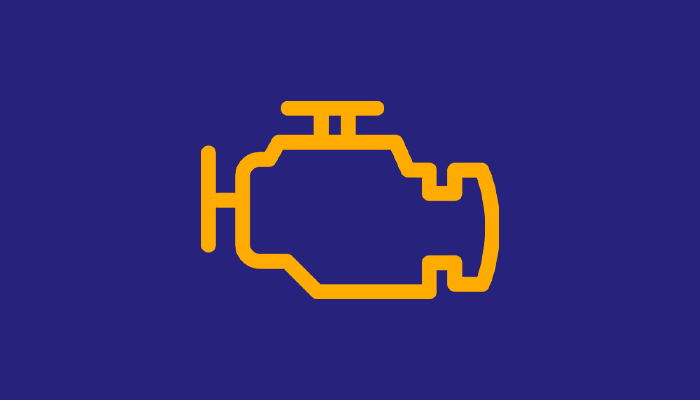When your car’s check engine light comes on, it can be a cause for concern. One common trouble code that drivers may encounter is P0128, indicating that the coolant temperature is below the thermostat regulating temperature.
While it may sound complex, understanding the basics of this code can help you diagnose and address the issue promptly.
What is the P0128 code?
P0128 is an OBD-II diagnostic trouble code that is triggered when the engine control module (ECM) detects that the coolant temperature is not reaching the desired operating temperature within a specified time frame after starting the engine.
Causes of P0128 Code
Several factors can contribute to the triggering of the P0128 trouble code:
- Faulty Thermostat: A malfunctioning thermostat may fail to regulate the engine’s operating temperature properly, leading to cooler-than-normal coolant temperatures.
- Low Coolant Level: Insufficient coolant in the system can impede the proper functioning of the thermostat, resulting in lower coolant temperatures.
- Coolant Leaks: Leaks in the cooling system can cause a loss of coolant, affecting the thermostat’s ability to regulate temperature effectively.
- Faulty Coolant Temperature Sensor: The coolant temperature sensor monitors the temperature of the coolant and sends this information to the ECM. A defective sensor can provide inaccurate readings, leading to incorrect thermostat operation.
- Faulty Heater Control Valve: The heater control valve regulates the flow of coolant to the vehicle’s heater core. A malfunctioning valve can disrupt the coolant flow, affecting the overall temperature of the engine.
Symptoms of P0128
Drivers may experience the following symptoms when the P0128 trouble code is triggered:
- Check Engine Light: The most common symptom is the illumination of the check engine light on the vehicle’s dashboard.
- Coolant Temperature Gauge: The coolant temperature gauge may indicate lower-than-normal temperatures or fluctuations in temperature.
- Decreased Fuel Efficiency: A cooler engine temperature can result in decreased fuel efficiency as the engine may run richer to compensate for the lower temperature.
- Reduced Heater Performance: In colder climates, drivers may notice reduced heat output from the vehicle’s heater due to lower coolant temperatures.
Diagnosing and Fixing P0128
Once you’ve diagnosed the P0128 trouble code and identified the underlying issue causing the coolant temperature to be below the thermostat-regulated temperature, it’s time to take action.
Diagnosing and fixing the P0128 trouble code typically involves the following steps:
1. Check Coolant Level:
- Begin by ensuring that the coolant level in both the radiator and reservoir is at the recommended level. If the coolant level is low, top it up with the appropriate coolant mixture recommended by the manufacturer.
- Inspect the cooling system for any signs of leaks. Common areas to check include hoses, connections, radiator, water pump, and heater core.
2. Test and Replace Thermostat:
- Test the thermostat to verify if it is functioning correctly. This can be done by removing the thermostat from the engine and placing it in a pot of boiling water. Use a thermometer to monitor the water temperature.
- The thermostat should open fully at the specified temperature. If it doesn’t, it is likely faulty and needs to be replaced.
- Replace the thermostat with a new one that matches the specifications of your vehicle. Ensure it is installed correctly, with the jiggle pin positioned at the top.
3. Inspect Coolant Temperature Sensor:
- Check the coolant temperature sensor for any signs of damage or corrosion. Ensure the electrical connections are secure.
- Use a multimeter to test the resistance of the sensor at different temperatures according to the manufacturer’s specifications. Replace the sensor if it is out of range or malfunctioning.
4. Check Heater Control Valve:
- Inspect the heater control valve for proper operation. Ensure it opens and closes smoothly when activated.
- If the heater control valve is faulty, replace it with a new one compatible with your vehicle’s make and model.
5. Clear Codes and Test Drive:
- Once you’ve made the necessary repairs and replacements, clear the trouble codes using an OBD-II scanner. This will reset the check engine light.
- Take your vehicle for a test drive to ensure that the coolant temperature reaches the desired operating temperature and remains stable. Monitor the temperature gauge and check for any signs of overheating or coolant leaks.
6. Regular Maintenance:
- To prevent future occurrences of the P0128 trouble code, adhere to regular maintenance schedules recommended by the manufacturer. This includes coolant flushes, thermostat inspections, and overall cooling system checks.
Final Thoughts
The P0128 trouble code indicates that the engine coolant temperature is below the thermostat regulating temperature, which can lead to various issues with engine performance and efficiency.
By understanding the causes, symptoms, and diagnostic steps associated with this code, drivers can effectively address the underlying issues and ensure their vehicle operates smoothly and efficiently.
If you’re unsure about diagnosing or fixing the problem yourself, don’t hesitate to seek assistance from a qualified mechanic.
